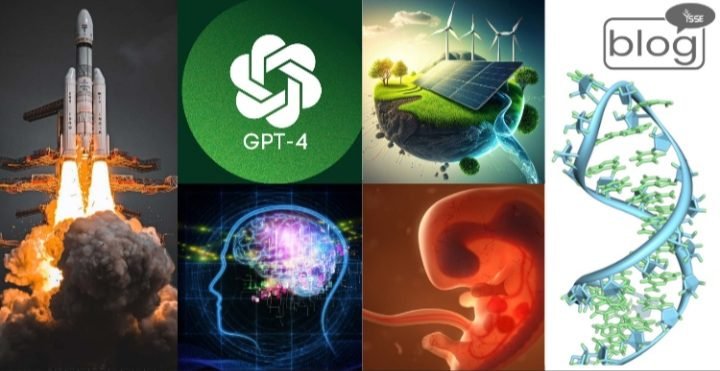Often we get to know about the latest achievements in science, don’t we? Which of them is very surprising, which is important for human civilization, which is having a good impact on the environment, and which may not have the expected results. Similarly in 2023 we see many scientific achievements. However, today we will know about 10 achievements of 2023 that are surprising, necessary and have a new role.
CHANDRAYAAN-3
Chandrayaan-3 is a lunar-expedition project of the Indian Space Research Organization (ISRO) and the first lunar landing. Chandrayaan-3 launched from Satish Dhawan Space Center on July 14, 2023. It landed on the Moon’s south pole on August 23, 2023, after several stages. With this successful mission, Isro became the fourth space agency to successfully land on the moon. Before this, the USSR, NASA and CNSA completed successful landings.
NOBEL PRIZE IN MEDICINE 2023
When the entire world is reeling from the ravages of Covid-19, an effective vaccine is most needed. Meanwhile, the two Hungarian scientists Katalin kariko′ and Drew Weissman explained the easy way to discover the vaccine. They worked on the base modification of nucleosides in 2005. Based on the results of the scientists, pharmaceutical companies Pfizer and Moderna prepared an effective vaccine for Covid-19. The Nobel Prize Committee has decided to award these two scientists in 2023. They were awarded on December 10, 2023.
GPT-4
GPT-4 is a version of artificial intelligence that can simplify even difficult problems. With the help of this, it is possible to get text output by inputting text or images. It was launched on March 14, 2023. It helps in creative writing like lyrics, song composing, drama dialogues, movie scripts etc. It is one of the lists of 200 scientific innovations 2023 of the world-famous Time magazine.
NEW CARBON COMPOUND IN SPACE
In June this year, a carbon compound was detected by NASA’s James Webb spacecraft. which has never been seen before. It was detected by the famous Hubble telescope. Since the carbon compound is an important component of living organisms, scientists believe that it can provide important information about the spread of life on Earth.
RNA RETRIEVAL FROM EXTINCT ANIMAL
Researchers claim they have been able to extract RNA from the bodies of extinct animals. They did this from the dried skin and muscle of a 130-year-old Tasmanian tiger preserved in a museum. RNA is a type of nucleic acid found in all living cells and is similar to DNA. It should be noted here that researchers were able to extract DNA from plant and animal fossils several years ago. After this success, researchers think that extinct animals can be brought back again.
FIRST VACCINE TO PREVENT RSV IN CHILDREN
In August, the FDA approved the first vaccine for use in pregnant women, called Abrysvo, to prevent RSV in infants. The vaccine is approved for use at a gestational age of 32 to 36 weeks. It is administered intramuscularly as a single-dose injection. It has reduced the risk of lower respiratory tract disease (LRTD) to a great extent. Adverse reactions such as nausea, muscle aches and headache may occur as a result of the use of the vaccine.
EARTH HAS ENOUGH RAW MATERIALS TO CONVERT INTO RENEWABLE ENERGY
In January, a group of scientists published the results of the research. It has been shown that the Earth has enough rare earth minerals and important raw materials that can be used to generate renewable energy and limit global warming. The scientists team found about 20 mining is needed to extract enough minerals that won’t significantly degrade the heat.
CREATING ARTIFICIAL HUMAN EMBRYO FROM STEM CELLS
Synthetic human embryos are created using stem cells and without the help of sperm and eggs. Scientists from the University of Cambridge and the California Institute of Technology have made this possible. Scientists published this information last June. This embryo can be used as an alternative to repeated abortions. Its use is not possible in most countries due to ethical and legal issues.
THE ‘TIME BOMB’ TO CURE BREAST CANCER
Breast cancer is a deadly disease causing worldwide panic. According to data from the NIH, breast cancer alone accounted for nearly 685,000 deaths in 2020. In March of this year, London-based The Institute of Cancer Research (ICR) announced that scientists have figured out how to cure breast cancer cells. Scientists have shown the mechanism that called the time bomb and suggested a strategy to disable infected cells.
BRAIN DECODER
Scientists report the results of a new method for easier communication with people who are unable to speak on May 1 in Nature Neuroscience. It requires the help of brain-computer interfaces to translate brain signals into sound and involves brain surgery. “Functional Magnetic Resonance Imaging” (FMRI) has been used to decode language. A team led by Dr. Alexander Huth of the University of Texas at Austin worked on this.
May science continue its triumphant journey, so that we may be gifted with some amazing achievements.
to read more blogs, click here
Writer,
Khairul Islam Shovo
Intern,
Content Writing Department
YSSE

